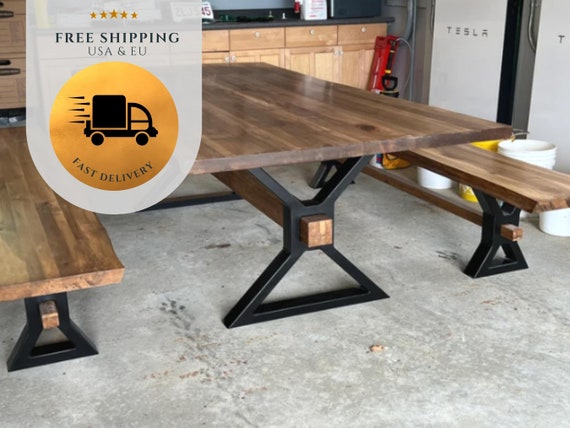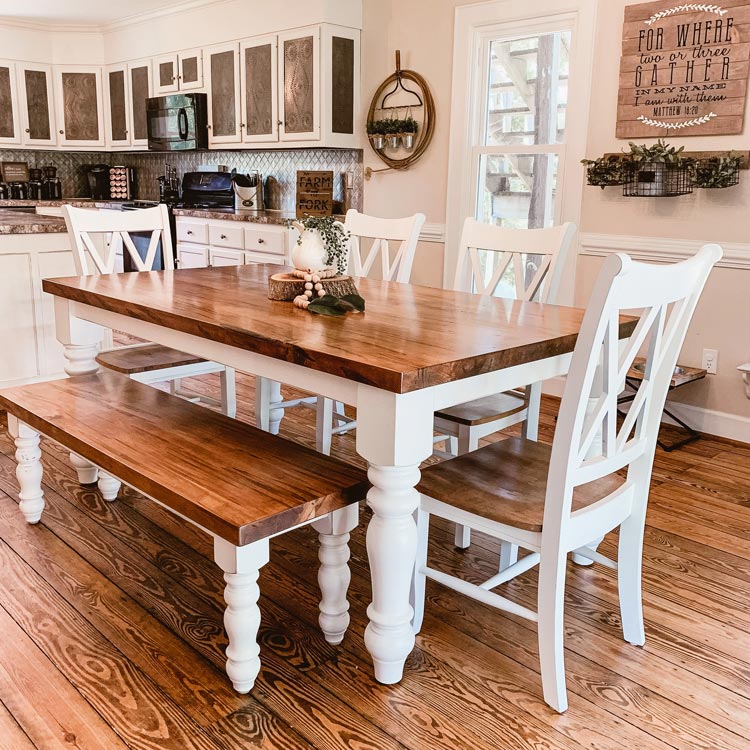Specialist Tips for Installing Dining-room Table Legs for Optimum Security
When it comes to setting up dining space table legs, accomplishing optimum stability is extremely important for both functionality and aesthetics. What specific techniques can improve stability even better?
Select the Right Legs
When picking the proper legs for your dining-room table, it is important to consider both capability and looks. The legs you choose will considerably affect the overall style and stability of the table. First, evaluate the table's planned use; if you expect frequent celebrations, tougher legs, such as those made from solid timber or metal, may be preferable, as they offer raised resilience and support.
Typical dining tables typically range from 28 to 30 inches in height, so guarantee the legs straighten with this requirement for convenience. Conical legs can include a modern touch, while turned legs may share a much more timeless visual.

Select Appropriate Equipment
How can the best equipment enhance the stability and long life of your dining-room table? The option of ideal hardware is crucial to guaranteeing that the legs of your table are safely affixed and able to hold up against regular use. High-grade screws, bolts, and brackets offer the required stamina to support the weight of the table, in addition to any kind of extra lots placed upon it throughout events or dishes.
When choosing screws, choose for those made from sturdy products such as stainless steel or brass, which stand up to deterioration and keep integrity gradually. The length of the screws is similarly important; they ought to pass through deeply into the table's framework without jeopardizing integrity. For bolted connections, think about using lock washing machines to avoid loosening due to resonance or movement.
Furthermore, utilizing corner braces can include added support, specifically for larger tables or those with much heavier tops. These braces disperse weight equally and aid preserve the table's form. Ensuring that the hardware you choose is ideal for the particular products of your table will certainly further improve its overall stability and durability, allowing you to appreciate your dining experience for years to find.
Ensure Proper Placement
Appropriate alignment of dining area table legs is essential for both visual allure and functional security. To achieve ideal placement, begin by measuring the distance from the table's edges to the leg add-on points.
Use a degree during installment to verify that each leg is anonymous vertical to the table top. It is advisable to note the preferred leg settings on the underside of the table with a pencil or masking tape before securing them.
Moreover, double-check the alignment after the initial screws are tightened up, as changes may be required prior to fully securing the hardware. By prioritizing proper placement, you not just boost the table's general style however likewise make certain that it remains steady and practical for several years to find.

Think About Weight Distribution
After ensuring appropriate placement of the dining space table legs, it is very important to take into consideration weight distribution to enhance security and performance. dining room table legs. Appropriate weight distribution is critical in protecting against making sure and tottering that the table can sustain its intended tons without danger of tipping or breaking down
When positioning the legs, ensure they are placed at equal distances from the center of the table to equally distribute the weight throughout the framework. Think about the weight of the tabletop and any things that will regularly hinge on it, such as tabletop appliances or decorative items. Tables with larger surfaces ought to ideally have legs located closer to the corners, as this makes best use of the base of support and reduces the threat of instability.
Furthermore, if the table is planned for usage in a high-traffic location, think about making use of heavier materials for the legs or including stabilizing elements, such as cross-bracing or a reduced rack - dining room table legs. These modifications can assist preserve balance and stop moving throughout use. Ultimately, a well-considered weight distribution strategy will significantly improve the table's total efficiency, ensuring it remains a attractive and useful focal point for your dining space
Test Stability Prior To Use
Testing the stability of the eating room table before usage is an essential step that should not be neglected. If the table shows instability, identify the legs or joints that may call for change.
Next, examine that all screws and bolts are tightened up effectively. Loose links can bring about instability and potential damage in time. If required, use wood adhesive on joints to boost security, making sure to enable sufficient drying out time.

Final Thought
To conclude, the setup of dining-room table legs requires careful consideration of products, placement, weight, and hardware circulation to attain maximum stability. By selecting durable legs and high-quality bolts, guaranteeing precise alignment, and distributing weight evenly, the architectural honesty of the table can be considerably enhanced. Performing a security examination prior to regular usage better makes sure that the table will withstand daily pressures, thus providing directory a secure and trustworthy dining experience.
When it comes to installing dining room table legs, accomplishing maximum security is extremely important for both performance and looks. The legs you select will dramatically impact the general style and stability of the table (dining room table legs). Typical eating tables commonly range from 28 to 30 inches in elevation, so guarantee the legs line up with this requirement for comfort.Appropriate placement of dining room table legs is essential for both aesthetic allure and useful stability.In final thought, the installation of dining space table legs check that calls for careful consideration of products, equipment, alignment, and weight circulation to accomplish maximum security